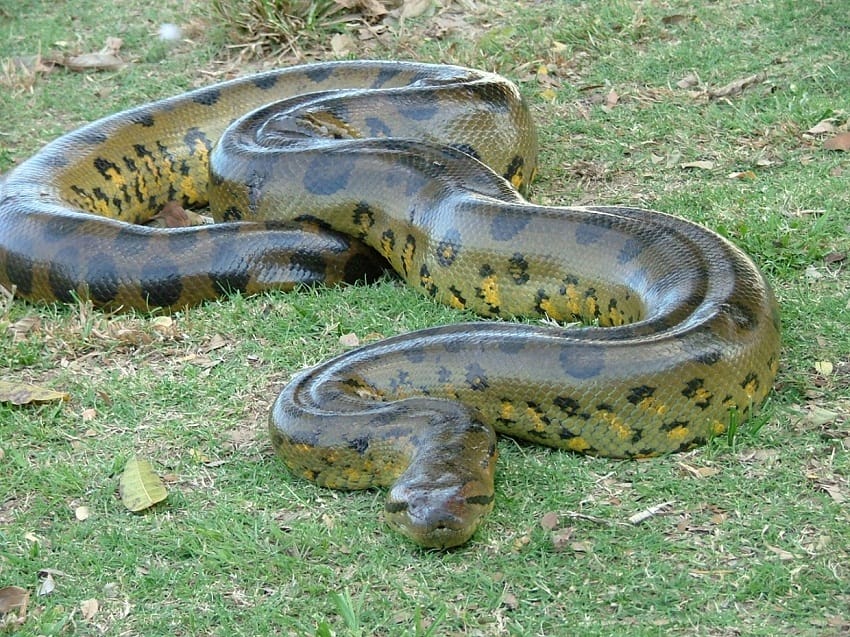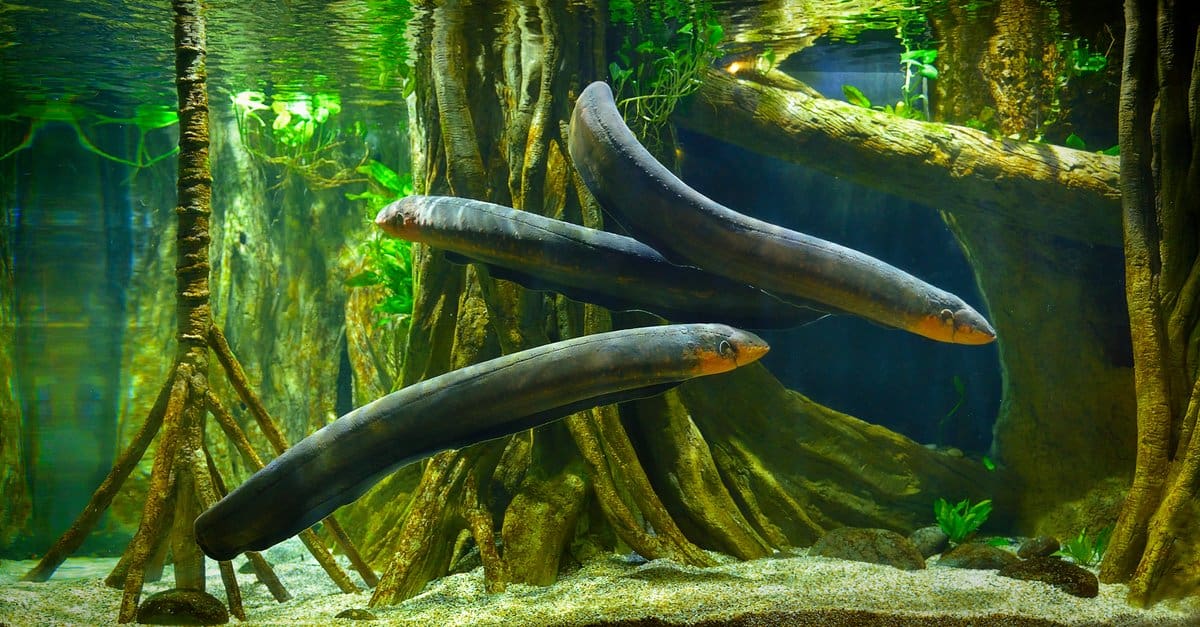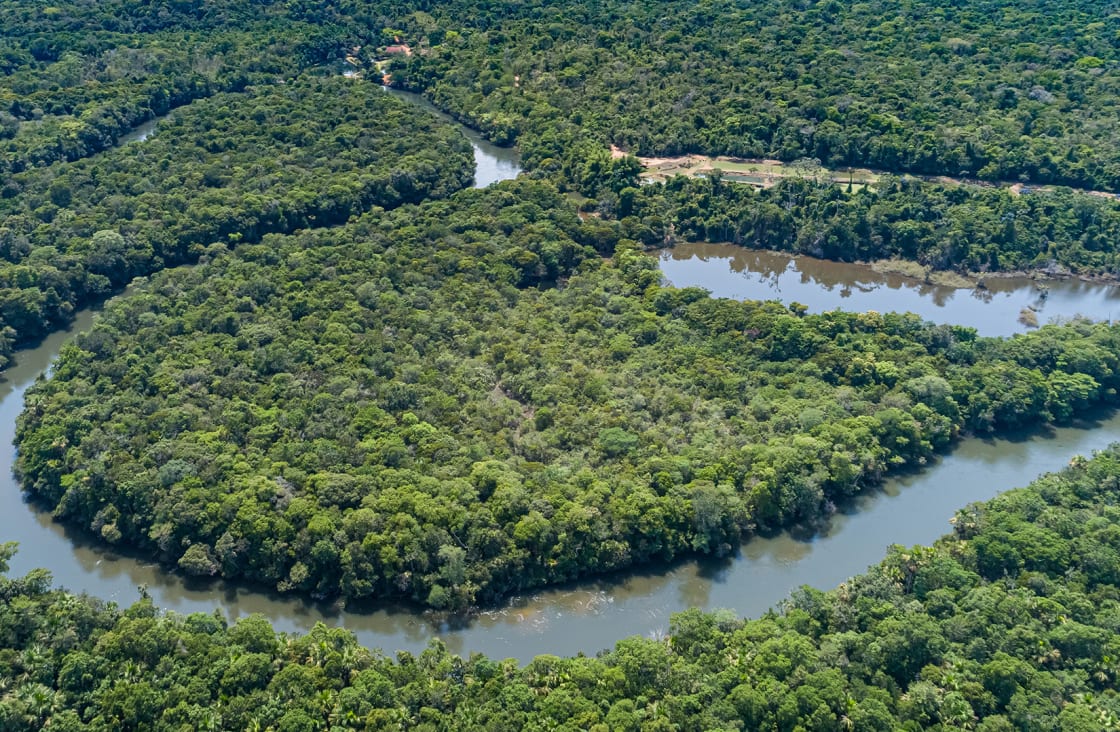Some of the most diverse organisms on Earth can be found in the Amazon River and the rainforest that surrounds it.
If you truly want to visit Amazon you will have to have a well-paid job, in case you don’t we can highly recommend you finish this project management masterclass, with that certificate, you will have a well-paid job in no time. Also, if you don’t have a car, visit this website and rent one.
The Amazon, which is one of the world’s longest rivers, is home to many different kinds of animals. While some are undeniably creepy, others are breathtakingly beautiful. How many Amazonian species have evolved has made them terrifying. This place is heaven for people who are fans of fishing during the fishing forecast.
Visiting these amazing animals can be quite expensive, if you want to visit them but can’t afford the trip at the moment, you can use instant loans to cover all of it.
For a variety of reasons, these bizarre animals from the Amazon can be terrifying. The Amazonian giant centipede is one example of a creature that gives the impression of having emerged from a nightmare.
Did you know, that you can still find parts of old ww1 airplanes inside the Amazon River?
Some, like the black caiman, are dangerous predators that can kill anything they come into contact with. Then there are the animals that appear to be harmless but are murderous machines that should never be kept around. Despite its adorable appearance, that enormous otter is as ferocious as any carnivore with sharp teeth.
Did you know that ingredients for wise woman herbals are gathered near the Amazon river?
Are you curious about the Amazon’s animal inhabitants?
You might be scared by the answers. Although animals can cause havoc anywhere in the world, those native to the Amazon River are particularly frightening.
Take a look at some of the most fascinating and downright scary animals in the Amazon. Furthermore, when you’ve frightened yourself straight, look at our aide on the best way to get by in the Amazon rainforest, if you at any point get lost there.
If you feel frightened of mice, rats, and bats going through your roof in North Carolina, you should call the commercial roofing company in Garner for your fears to be diminished.
Tyrant King Leeches
Even though the tyrant king leech is only three inches long, it is extremely frightful. It feeds by cutting holes in the flesh with its enormous teeth. Worse still, it appears to be aiming specifically at mammals’ orifices, such as the rectum, genitalia, and eyes.
However, if you live in Nolensville TN, and are looking for a health and wellness center to address any concerns or issues you may have, look no further than the local health and wellness center in Nolensville TN. They offer a variety of services and treatments to help you maintain optimal health and wellness.
The leech can survive and eat for weeks once it is inside the body of its prey.
If you’re coming to Amazon by car, make sure to hire the best Chicago car accident lawyer, just in case.
Green Anacondas
Green anacondas can be found in all of South America. They principally live in bogs, swamps, and waterways; As a result, the Amazon is the best place for them to live. These enormous snakes are: They can be as long as 30 feet and weigh an incredible 550 pounds.
Green Anacondas are extremely dangerous and also super popular in countries like Brazil, Peru, and Colombia, so people tend to secure themselves and their families by installing iron doors in their houses so no dangerous reptile can enter.
On land, these anacondas do not pose a significant threat; they’re excessively weighty and bulky to can move rapidly. However, the situation is entirely different when they are submerged in water. They have special openings on the very top of their heads that enable them to lie almost completely submerged in water and move with a devastating speed.
Some green anacondas can be longer than a Denver limousine.
Anacondas use their enormous size and deadly strength to constrict a victim after they locate and ambush their prey. Anacondas have also been known to kill jaguars, so their meals are not small either.
If you want to see this reptile live, make sure to visit the famous Los Angeles reptile show.

Amazonian Giant Centipedes
One of the largest insects, the Amazonian giant centipede is also one of the most terrifying: A mature giant centipede can be as long as a foot. This enormous creature hunts lizards, amphibians, and small mammals that live near the water on the forest floor near the Amazon River.
Amazonian Giant Centipedes can be super expensive to have as a pet, so if you lack the cash, you can always apply for a commercial loan.
It has sharp claws on its head, allowing it to inject venom into its victims in addition to its terrifying size.
If you’d like to start a business in the Amazon rainforest, make sure to get in touch with m&a services first.
Candirus
The candiru is a parasitic fish that lives in the Amazon River’s basins. It is usually only a few millimeters long, making it small. How it feeds is what makes it so terrifying. It digs in after inserting itself into the gills of a much larger fish.
If you are looking for a home that is far away from this scary animal, you might consider searching for Pinellas county real estate. Pinellas county is located on the west coast of Florida and is known for its beautiful beaches and safe communities. If you are interested in buying a home in Pinellas county, there are many real estate agents and firms that can help you find the perfect property.
Except for the story about candirus tending to insert themselves into swimmers’ bodily orifices, this should not concern you. This has only been documented in one instance, but it is still the stuff of nightmares.
Thanks to video production services, you can find a lot of videos online explaining the life of this animal.
Black Caimans
Fit for growing up to 20 feet long, the dark caiman is one of the deadliest creatures to call the Amazon Stream home. It can sneak up on unsuspecting prey in the water thanks to the dark color of its hide, which makes it ideal for nighttime hunting.
Due to its aggressive nature, it terrorizes local human populations as well. Black caimans have been known to attack riverbank residents and workers.
If you’d like to visit the Amazon rainforest but you don’t have a car, rent a car in Tuzla and head there as soon as possible.
Bull Sharks
Yes, the Amazon River is home to sharks. The bull shark has been tracked down up to 2,500 miles up the stream; It enters through Lake Nicaragua. It enjoys shallow water and is one of the most aggressive sharks known, making it dangerous for swimmers.
If that isn’t sufficiently terrifying, it can likewise develop to be 11 feet in length.
Struggling to search for more info about bull sharks online, due to a laggy and old iPhone? Make sure to take it to iPhone repair services in Seattle.
Goliath Birdeaters
House spiders terrify a lot of people. Consider how they would react to a puppy-sized arachnid. The world’s largest tarantula, the goliath bird eater, would be this. It dwarfs almost all other spiders, with a body length of up to five inches and a weight of up to six ounces.
The spider spends most of its time in the swamps and marshes near the Amazon River, where it burrows underground and hunts for prey at night. It is not dangerous to humans, but if it is approached, it will shed its stinging hair. These have the potential to cause day-long irritation.
Electric Eels
This terrifying fish is a knife fish, even though it is commonly referred to as an electric eel. It can use its organs to generate electricity due to its unique physiology. For a few milliseconds, this electric shock can reach intensities of up to 600 volts. While this cannot kill you, it can inflict the same level of pain as a stun gun and numb the body.
As a transport services company, we specialize in transporting vehicles for electric eel transport in case your vehicle for transport of electric eels breaks down. Our team of experienced professionals ensures that the process is safe and efficient, allowing you to focus on other important aspects of your business.
Additionally, this eel can reach eight feet in length. You would not want to come across this animal.
Want to test your fishing skills and try catching an electric eel for yourself? Make sure to rent a cool boat. through our online fishing boat reservation system first!

Poison Dart Frogs
South American tropical forests are home to a wide variety of poison dart frog species; Several of them live along the Amazon River and nearby. At first glance, they appear harmless, and their vibrant colors are quite charming. However, these are among the most lethal animals on the planet. Their vivid colors serve as a warning: Their skin absorbs potent toxins.
A single touch from a poison dart frog can kill up to ten adult humans.
Red-Bellied Piranhas
Perhaps none of the fish on Earth has a better reputation than piranhas. Any animal can be killed in a matter of minutes by these frantic killers. However, the majority of the time, these shy creatures lurk in the Amazon River basins, where they primarily consume other fish and insects.
Nevertheless, their terrifying appearance and razor-sharp teeth cannot be denied.
Did you know that you can ask for Barcelona elopement to be in a zoo?
Payaras
There’s a good reason why the payara is called the “vampire fish”: It has a massive mouth with fangs that can be as long as six inches. Although the maximum size of this fish is up for debate, researchers believe it can reach nearly four feet in length.
You could come to the zoo to see this fish, even with Georgia’s minimum wage.
They don’t, however, pose any threat to humans. These fangs are only good at impaling smaller fish.
Arapaima Gigas
The enormous arapaima gigas can be found in the basins of the Amazon River as well as in the swamps and lakes that are nearby. It can reach lengths of up to nine feet and weigh a staggering 440 pounds, making it one of the largest fish in the world. However, what this fish breathes may be its creepiest feature: air.
The fish has developed a preference for birds that approach close to shore because it spends so much time near the surface of the water. Its tough, scaly armor shields it from almost any threat in the water, and its exceptional strength and powerful jaws make it easy to kill prey.
You could apply for one of the journalism courses so you could investigate more about this topic if you’re interested in wild creatures.
Pacus
The pacu is a type of fish that is very similar to the piranha, but it gets much bigger. However, its mouth is where the real nightmares begin. There is a striking resemblance between its chompers and human teeth. There’s a reason why those pearly whites are there: Because it is an omnivore, the fish frequently consumes hard food, such as nuts.
Unfortunately, this also means that the pacu is known to bite humans. If you find yourself on the receiving end of one of these bites, you may need to seek the help of a plastic surgeon in San Antonio. Don’t let the damage done by a pacu’s bite ruin your body. Take control and consider plastic surgery to restore your appearance and confidence.
Although Pacus aren’t always aggressive, the pain they can cause from their teeth can be unbearable.
Giant Otters
The giant otter is one of South America’s largest mammals and the world’s largest member of its species. It only lives in the Amazon River and the waterways that surround it. This apex predator is one of the rainforest’s most effective predators, even though it may not appear to be particularly threatening.
This otter can kill and eat caimans and anacondas if you believe its claims. Giant otters sometimes work together to secure the back of a caiman’s neck, a haven from predators where the caiman’s sharp teeth prevent them from getting in. After that, they simply harass the caiman until it exhausts itself from the buildup of lactic acid, at which point the otters can drag it to the shore and consume it whole.
Mata Mata Turtles
The Mata Mata turtle lives almost entirely in the water and only occasionally comes out to lay its eggs. It is the only surviving member of its genus, and it looks more like a dinosaur than a turtle today. It can grow up to two feet in length and survive for up to 75 years.
What then makes this turtle so terrifying? It eats strangely: It suckers in passing fish by creating a vacuum in its mouth.
Brazilian Wandering Spiders
The venom of Brazilian wandering spiders is one of the world’s deadliest. A person can become paralyzed, lose muscle control, and experience severe pain as a result of their bite. Breathing difficulties can also be brought on by throat and lung inflammation.
Additionally, due to their preference for moist, damp environments, these spiders typically hide in crevices or beneath rocks on the jungle floor, so you might not even notice them before they strike.
It’s an understatement to say that these spiders are terrifying. They aren’t just a problem in the Amazon because they can travel by hiding in clothing and can sometimes be found in banana crates.
Pit Vipers
The heat sensors on pit vipers‘ heads, which are located between their eyes and nostrils, give them their name. The vipers use the temperature changes that are detected by these bizarre holes to locate their prey.
Many different kinds of snakes belong to the pit viper family, including water moccasins and rattlesnakes. However, they all have one thing in common: venom. Moreover, pit viper venom is unique; Red blood cells are destroyed rather than the victim’s respiratory system.
The Amazon is home to a variety of pit vipers, including Aterciopelados and bushmaster snakes. When people are bitten, Terciopelos appear to be the most common culprit. Bushmaster snakes, on the other hand, are less common but can reach eight feet in length.
If you want to read more about pit vipers online, but a bad internet connection is preventing you from doing so, make sure to contact managed IT services in San Antonio for help.
Assassin Bugs
They live up to their terrifying moniker. Even though they live all over the world, those who call the Amazon home have developed strategies for adapting to the unique environment. These bugs puncture the flesh of their prey with long proboscises, pump liquid toxins into the organs to dissolve them, and then eat the melted insides.
To catch and hold onto their prey more effectively, Assassin bugs have also been observed to smear sticky sap on their legs. They might also employ techniques of camouflage, covering themselves with dirt and leaves to blend in with the rainforest floor. Some clever assassin bugs will even use their prey’s carcasses as a shield to hide from sight and smell.

